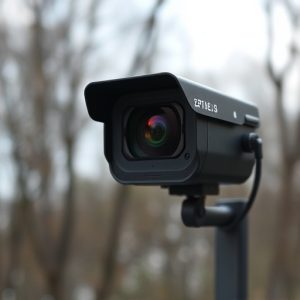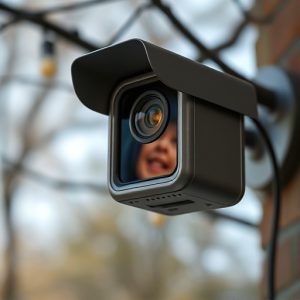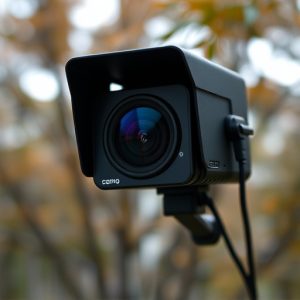Detecting Glints: Protecting Privacy with Nighttime Surveillance of Small Hidden Cameras
Small hidden cameras in bedrooms pose significant privacy risks due to their compact size and discre…….
Small hidden cameras in bedrooms pose significant privacy risks due to their compact size and discreet design. Traditional detection methods are often ineffective, but advanced techniques like enhanced camera lens glint detection offer a solution. By using specialized filters, sensors, and image processing algorithms, these methods can uncover hidden threats even in low-light conditions. Implementing strategies such as opaque curtains, motion sensors with smart lighting, and multi-layered defense systems is crucial to maintain privacy from small hidden cameras in bedroom environments.
In today’s digital age, small hidden cameras pose a significant threat to privacy, particularly in bedrooms. This article delves into the critical issue of detecting these covert devices during nighttime surveillance. We explore the unique challenges presented by low-light conditions and the pivotal role of glint detection in identifying suspicious lens reflections. By examining advanced techniques for recognizing lens glints, we provide essential measures for enhancing privacy protection in sensitive spaces.
- Understanding Small Hidden Cameras and Their Challenges
- The Role of Glint Detection in Nighttime Surveillance
- Techniques for Identifying Lens Glints in Low-Light Conditions
- Implementing Effective Measures for Bedrooms and Privacy Protection
Understanding Small Hidden Cameras and Their Challenges
Small hidden cameras, often referred to as spy cameras or surveillance devices, pose unique challenges in detection, especially during nighttime conditions. With their compact size and discreet design, these tiny cameras can easily be concealed in various locations, making them a concern for privacy and security. In the context of bedrooms, where personal spaces are typically considered safe havens, the presence of small hidden cameras becomes an even more sensitive issue.
The challenges in detecting these devices arise from their minimal physical dimensions and the need to avoid false positives due to common household items or natural reflections. Traditional methods might not be effective against such advanced technology, as they often rely on visual inspection or simple lighting adjustments. However, with innovative techniques, like enhanced camera lens glint detection at night, it is now possible to uncover these hidden threats, ensuring a more secure environment for homes and personal spaces.
The Role of Glint Detection in Nighttime Surveillance
Techniques for Identifying Lens Glints in Low-Light Conditions
In low-light environments, such as during nighttime surveillance with small hidden cameras for bedroom use, identifying lens glints can be a challenging task. However, advanced techniques have been developed to overcome this obstacle. One effective method involves utilizing specialized filters and sensors that enhance visibility in dimly lit conditions. These tools can detect even the subtlest reflections from camera lenses, ensuring that glints are not overlooked.
Additionally, image processing algorithms play a crucial role in refining the detection process. By analyzing pixel patterns and color variations within frames, these algorithms can isolate lens glints from regular lighting sources. This becomes particularly useful when dealing with small hidden cameras for bedroom settings, where minimal light leaks or reflective surfaces can compromise security.
Implementing Effective Measures for Bedrooms and Privacy Protection
Implementing effective measures to counter the presence of small hidden cameras in bedrooms is paramount for maintaining privacy. With the increasing availability of miniature surveillance devices, it’s crucial to adopt proactive strategies to safeguard personal spaces. One approach involves utilizing specialized lens glint detection technologies that can identify subtle reflections from camera lenses, even when they’re not overtly visible. These systems operate silently in the background, continuously scanning for any anomalies that could indicate the presence of hidden cameras.
For enhanced privacy protection, integrating multiple detection methods further strengthens defenses. This includes the use of physical barriers like opaque curtains or blinds, which physically obstruct line-of-sight access to windows and potential entry points for small hidden cameras. Additionally, employing motion sensors and smart lighting can act as deterrents, making it more challenging for unauthorized devices to operate unnoticed within a bedroom environment.
The detection of lens glints in low-light conditions is a game-changer in nighttime surveillance, especially when facing the challenges posed by small hidden cameras in bedrooms. By employing advanced techniques such as image processing and machine learning, it’s now possible to identify these subtle reflections with high accuracy. This not only enhances privacy protection but also ensures that individuals can trust their surroundings, knowing their personal spaces are secure from covert recording devices. Implementing effective glint detection measures is a crucial step towards creating a safer and more transparent digital environment, particularly within the intimate settings of bedrooms.


